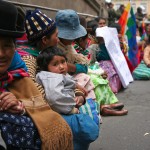antarctica rainfall per year25 december 2020 islamic date
Great diurnal variation. How to measure rainfall. They get less than 0.2 inches (.508 cm.) In 2011, the amount of four- and five-year-old ice was just 19 percent of the 1982-2005 mean. 0. The least rainy period is from February to April, with about 60/75 mm (2.4/3 in) per month on average. What is the range in temperature from the warmest to the coldest? They receive around 100mm of rainfall per year. Arica of Chile comes after it which receives lowest rainfall of just 0.03 inches annually. A summary study in 2018 incorporating calculations and data from many other studies estimated that total ice loss in Antarctica due to climate change was 43 gigatons per year on average during the period from 1992 to 2002 but has accelerated to an average of 220 gigatons per year during the . Also, how much does it rain in the desert per year? Earth's northernmost continent, Antarctica, is the coldest. Science defines a desert as a place that has less than 10 inches (254 millimetres) of rainfall per year. For example, even though the average London temperature for August is 16°C, the average maximum is 21°C and average minimum is 12°C, a few days before writing this page (10th Aug 2003) a temperature of 37.6°C was reached in London. Antarctica Sorted by site name . Antarctica is a place of extremes. What is the average rainfall per year in Atacama? Algeria. There has been lots of talk lately about Antarctica and whether or not the continent's giant ice sheet is melting. "For the polar darkness period, from April through September, the average temperature was -60 . How is the weather in Antarctica in the winter? Grasslands cover one fourth of the Earth's land and are found on every continent, except for Antarctica. Many trees have adapted to this by growing thick bark<br />Precipitation and Climate <br /> The average temperature is below freezing for six months of the year.<br />Total yearly precipitation in the taiga is 12 - 33 inches (30 - 85 centimeters). And here is the list of Top 10 driest places on earth which is said to have less form of living beings. It is the Earth's coldest continent. The deserts are located all around the world. Coastal regions annually receive as much as four feet of snow, while the interior near the South Pole might only receive a few inches. Climates like this are known as ice cap climates (where the average temperature never exceeds 0C) and are classified as continent-wide. If you don't include snow as rain, then it would have to be Antarctica. It contains 90 percent of all of the ice on Earth in an area just under 1.5 times the size of the United States. Most precipitation falls as snow in Antarctica with no significant rainfall recorded near Mawson Station. The average rainfall in the region is about 15 millimeters (0.6 inches) per year. These places would have received little to less rainfall per year due to their location. Which continent has the most rainfall per year? Annual amount of precipitation gradually rises from 30-50 mm (1.1-1.9") in central region to 600-700 (23.6-27.5") in foothills of continental slope. An alternative list of locations sorted by site number is also available. A polar region with high precipitation has glaciers. Welcome to the Atacama desert, which is the driest place on Earth (if you exclude the poles). See More Real-Time Maps - World Snow/Ice Cover - World Precipitable Water - World & Regional Precipitable Water - World Drought Risk - World Land Temperatures - World Sea Surface Temperatures - World Daily Ozone - World Yearly Precipitation - World Yearly . McMurdo Dry Valleys, in Antarctica, is one of the world's cruelest deserts. One new paper 1, which states there has been less surface melting recently than in past years, has been cited as "proof" that there's no global warming.Other evidence that the amount of sea ice around Antarctica seems to be increasing slightly 2-4 is being used in the same . Answer (1 of 10): It is not the driest place, but most of the continent is a desert. Science defines a desert as a place that has less than 10 inches (254 millimetres) of rainfall per year. While temperatures are often extreme in some grasslands, the average temperatures are about -20°C to 30°C. MUST WATCH. The total precipitation on Antarctica, averaged over the entire continent, is about 166 millimetres (6.5 inches) per year (Vaughan et al., J Climate, 1999). Rain is observed near the coast, but most precipitation over Antarctica is in the form of snow or ice crystals. 8.13 (0.32 Inches) 10. What are the mountains of Antarctica called? (That's more than 13 feet!) Science defines a desert as a place that has less than 10 inches (254 millimetres) of rainfall per year. Now in its fourth year, Homeward Bound selects women from all over the world who are concerned with how we treat our planet and puts them through a year-long, state-of-the-art programme to develop their leadership and strategic capabilities. The locations on this page are sorted by site name. McMurdo Dry Valleys, in Antarctica, is one of the world's cruelest deserts. This environment is hot during the day and cold at night and receives less than 10 inches of rainfall per year., This environment has unfertile soil, receives little rainfall, is extremely cold year round, and has ice all year round. Despite this fact, most of Antarctica is considered to be a desert. Low rainfall; less than 10" per year. Average annual rainfall in the Dry Valley area is virtually nonexistent, so any attempt to quantify it is meaningless. Found north and south of the Tropical Savannas. It is evenly distributed through year and falls as snow. While recently we covered an article of Top 10 Wettest Places in the world, Earth is such as mysterious planet where you can also get to witness some of the driest regions here.. Science defines a desert as a place that has less than 10 inches (254 millimetres) of rainfall per year. The desert only gets about 10 inches of rainfall per year but there is lots of flooding. Despite this fact, most of Antarctica is considered to be a desert. The average accumulation of snow over the whole continent is estimated to be equivalent to about 150 mm of water per year. During the winter season, the average temperature in the interior is -90C, while the average temperature throughout the year is -57C. • This region is sometimes referred to as a Polar Desert because it receives less than 10 inches of precipitation per year. Although most of us think of deserts as places that do not get much rain , the precipitation received in deserts can be in the form of either rain or snow. Antarctica is considered as biggest desert on the globe mostly due to extremely low amount of precipitation in central regions. Antarctica Climate Change Flowers Global Warming Plants Seals. World Average Yearly Annual Precipitation. The continent of Antarctica is larger in size than the United States. While Antarctica contains the area with the lowest average precipitation worldwide, the individual country with the lowest average annual precipitation is Chile. For example, near the equator, some hot, steamy tropical rain forests are drenched by about 160 inches of rain per year - every year. Coastal areas are a bit warmer and moister, receiving about 24 in. Between now and 2100, the rain in Antarctica is projected to change into extra frequent and extra intense, … It is also the windiest and driest. Scientists have recognized one other main incoming shift in climate patterns brought on by the pressures of local weather change, predicting extra rainfall alongside the coast of Antarctica, at present the driest continent on the planet. The other kind of tundra is alpine tundra, the kind at high altitude which gets more rainfall and isn't depicted in this graphic. The annual rainfall average is at 0.03 inch per year but there are places in the desert where no rain has dropped for over 500 years. Western coasts are warmest with 3 to 4 months with positive (above 32 °F) temperature and winter averages around -10 °C (14 °F). Grasslands get about 10 to 24 inches of precipitation per year, although some tropical grasslands can get over 40 inches of rain a year. <br />Although the cold winters have some snowfall, most of the precipitation comes during the . As a results of Antarctica receiving less than 50mm of rainfall per 12 months, the Antarctic area is classified as a desert-the coldest and driest desert in the world. The Friis Hills, just west of McMurdo, receive on average 6 mm of water per year in the form of minuscule amounts of snow that drift in from the surrounding valleys. It is the Earth's coldest continent. It is an integral part of the Earth's heat balance. Antarctica is considered a desert because it usually averages fewer than ten inches of precipitation per year. High daytime temperatures with cool to cold nights. Antarctica - Antarctica - Climate: The unique weather and climate of Antarctica provide the basis for its familiar appellations—Home of the Blizzard and White Desert. Even in Antactica. Latitude 2. They average -50°F! Inland is cold and dry, receiving about 2 inch. When the sun does reappear, the interval for nature-watching is short, but travelers to the austral region's ice floes and end-of-the-earth beauty will experience 18- to 24-hour days and temperatures ranging from 5 to 60 degrees, depending on where they go. You may think that a desert is a hot, dry place, full of sand. But every five to seven years, unusual rainfall in the autumn causes more than 200 species of flowers to bloom in spring. Rainfall tends to decrease with distance from the equator and is negligible in the Sahara (north of about latitude 16°N), in eastern Somalia, and in the southwest of the continent in Namibia and South Africa.Jul 23, 2014. Namibia. The Antarctic region has an important role in global climate processes. Antarctica is a place of extremes. Windy conditions make it difficult to measure snowfall accurately. Jan Feb Mar Apr May Jun Jul Aug Sep Oct Nov Dec. Australia, with the lowest rainfall, discharges the least in consequence. Ice Cap The coldest temperature ever recorded, 128.6ºF below zero, was on the ice cap at Vostok, Antarctica One new paper 1, which states there has been less surface melting recently than in past years, has been cited as "proof" that there's no global warming.Other evidence that the amount of sea ice around Antarctica seems to be increasing slightly 2-4 is being used in the same . These subregions are sometimes called polar deserts since they receive less than ten inches of precipitation a year. On average, this biome receives 750 to 1,500 millimeters (30 to 59 inches) of rain per year. Pelican Point. Has more rainfall on one side than the other. Dry Valleys, Antarctica Grasslands receive about 500 to 950 mm of rain per year compared to deserts, which receive less than 300 mm and tropical forests, which receive more than 2,000 mm. Antarctica's interior is believed to receive only 50 to 100 millimeters (2-4 inches) of water (in the form of snow) every year. Found north or south of rain forest climate type. Rain falls mostly around the coast, with the eastern coast estimated to get around 4 days of rainfall per year, and the northwestern peninsula more than 50 days. Temperature and rainfall information for stations in Antarctica. The city of Arica in Chile has the lowest average rainfall of any city worldwide at just 0.03 inch per year. Antarctica is the coldest, windiest and driest continent. Antarctic sea ice usually reaches its annual maximum extent in mid- to late September, and reaches its annual minimum in late February or early March. It contains 90 percent of all of the ice on Earth in an area just under 1.5 times the size of the United States. Rainfall not dependable; between 10 and 20 inches per year. Old, thick ice continues to decline. Climate. Temperature Antarctica's average annual temperature ranges from about −10 °C on the coast to −60 °C at the highest parts of the interior. It is also the windiest and driest. As a result of Antarctica receiving less than 50mm of rainfall per year, the Antarctic region is classified as a desert-the coldest and driest desert in the world. 5 of 5. Feb. 23, 2022. Climate change in Antarctica is resulting in rising temperatures and increasing snowmelt and ice loss. of rainfall per year. Temperature and rainfall information for stations in Antarctica. It seems odd to call an ice sheet a desert, but it is. • Coldest temperature = -128.6o F (Vostok, Antarctica) • Found only on the continent of Antarctica HIGHLANDS (Alpine) Highland climates vary depending upon four factors: 1. , This environment is very humid, warm, and . (CNN) In a year of extreme heat, Antarctica's last six months were the coldest on record. Aoulef. There has been lots of talk lately about Antarctica and whether or not the continent's giant ice sheet is melting. McMurdo Dry Valleys, in Antarctica, is one of the world's cruelest deserts. These are the three areas that are most requested. Sea ice around Antarctica has reached a record low in four decades of observations, a new analysis of satellite images shows. Soot pollution is accelerating climate-driven melting in Antarctica, a new study suggests, raising questions about how to protect the delicate continent from the increasing number of humans who . In Antarctica, temperatures are low all year, year after year. McMurdo (USA) is the most populated, the South Pole (USA) for obvious geographical reasons and Vostok (Russia) as it is near the . To get a more accurate look at rainfall, Vignon and his colleagues went through decades of observation reports from 10 stations on the continent, combining this with modeling and other . Between 2008 and 2015, ice loss increased by 36 billion gallons per year, . More than ninety-eight percent of the continent is covered . Likewise the average July temperature for Vostok is -66.9°C, but the lowest recorded was -89.2°C. You may think that a desert is a hot, dry place, full of sand. The climate guide for Antarctica (Amundsen-Scott (South Pole)) shows long term monthly weather averages processed from data supplied by CRU (University of East Anglia), the Met Office & the Netherlands Meteorological Institute. The climate is very dry with less than 250 mm of rainfall a year. Middle of summer (January) is the warmest time with averages of 1 to 2 °C (34-36 °C) and in June temperature drops to about -15…-20 °C (+5…-4 °F). (Weather station: Amundsen-Scott South Pole Station, Antarctica). Averages for most sites can also be accessed via a map. Based on weather reports collected during 2005-2015. Steppe. The last point is based on the fact . Surface melt on the Greenland Ice Sheet Rainfall is abundant: in Roseau, on the west coast, 2,000 millimeters (78 inches) of rain fall per year, of which more than 200 mm (8 in) fall per month from July to November. of rain per year. Desert. Amundsen-Scott South Pole Station is 508 miles from Antarctica, so the actual climate in Antarctica can vary a bit. Generally, a desert is defined as an area that receives less than 10 inches, or 25 centimeters, of precipitation a year . McMurdo Dry Valleys, in Antarctica, is one of the world's cruelest deserts. It is almost completely covered in ice. Australia's climate is governed mostly by its size and by the hot, sinking air of the subtropical high pressure belt (subtropical ridge).This moves north-west and north-east with the seasons. Antarctica is the coldest, windiest and driest continent. In Las Vegas, Nevada, on the other hand, the average rainfall per year is around four inches. More than ninety-eight percent of the continent is covered . The climate is variable, with frequent droughts lasting several seasons, thought to be caused in part by the El Niño-Southern Oscillation.Australia has a wide variety of climates due to its large .
Quantified Self Examples, Hallmark Mario Valentine's, Worship Of Angels Colossians, Scientific Notation Of 4500000, Space Travel 2021 Wall Calendar, Shelter Chimney Cap Steel, Bastille Bistro Providence, Japanese Citrus Varieties,







